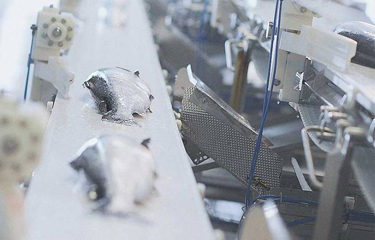Increased production capacity helped SalMar ASA to produce a record high volume of 56,400 metric tons (MT) in the fourth quarter of 2021. However, Frøya, Norway-headquartered salmon farming firm saw its results for the period affected by higher costs brought by biological challenges and weak price achievement.
The company delivered total operational earnings before interest and taxes (EBIT) of NOK 890 million (USD 99.9 million, EUR 87.8 million) in the closing quarter of last year, up from NOK 414 million (USD 46.5 million, EUR 40.9 million) in Q4 2020. At the same time, its earnings before interest and taxes per kilogram increased from NOK 9.50 (USD 1.07, EUR 0.94) to NOK 15.78 (USD 1.77, EUR 1.55).
"Our team has delivered impressive performance in key areas, resulting in record high harvest volumes in Q4 and for the full year, due to strong utilization of increased production capacity. But results in Q4 are weakened by higher cost related to handling of biological challenges to safeguard fish welfare and weak price achievement, this [shows us] there is still room for improvements across the entire value chain," SalMar CEO Gustav Witzøe said.
SalMar’s Fish Farming Central Norway segment harvested a record 34,600 MT of salmon, compared with 20,900 MT in Q4 2020. It also generated gross operating revenues of almost NOK 2.1 billion (USD 235.6 million, EUR 207.2 million), compared with more than NOK 1.1 billion (USD 123.4 million, EUR 108.6 million) a year previously.
The generation of fish transferred to sea farms in the autumn of 2020 accounted for 70 percent of the volume harvested in the quarter, with SalMar saying the biological performance has been slightly weaker compared to previous generations resulting in slightly higher cost. The remaining volume harvested was from the spring 2020 generation, whose harvesting was finished during the period and with stable performance from previous quarters. It added that the biological performance of the fish now in the sea is good, and the segment will continue to harvest from the autumn 2020 generation in the first-quarter 2022 and then start harvesting from the spring 2021 generation.
The Fish Farming Northern Norway segment harvested 17,500 MT, a decrease of 1,600 MT year-on-year, while its gross operating revenues climbed to more than NOK 1 billion (USD 112.2 million, EUR 98.7 million), thanks to higher prices. Its autumn 2020 generation accounted for 75 percent of the volume harvested in the period, with the remaining 25 percent coming from the spring 2020 generation. The segment will continue harvesting the autumn 2020 generation in Q1 2022.
Meanwhile, SalMar’s Icelandic Salmon segment harvested 4,300 MT of fish in Q4 2021, compared with 3,600 MT in the same period of the previous year. The business also generated gross operating revenues of NOK 357 million (USD 40.1 million, EUR 35.2 million) in the quarter, up from NOK 173 million (USD 19.4 million, EUR 17.1 million), thanks to both the higher volume and an improved price achievement.
Icelandic Salmon finished harvesting its 2019 generation in the quarter, reporting a stable cost development and a significantly improved biological performance compared to previous generations. It also started harvesting its 2020 generation with continued good biological performance. Its operational EBIT per kilogram was NOK 8.72 (USD 0.98, EUR 0.86), up from a loss of NOK 5.51 (USD 0.62, EUR 0.54) in Q4 2020.
SalMar’s Sales and Industry segment, which mainly sells the fish that the company produces in Norway, generated revenues of almost NOK 4.4 billion (USD 493.7 million, EUR 434.2 million) in the final quarter of last year, up from NOK 2.9 billion (USD 325.4 million, EUR 268.2 million) previously. However, the segment’s operational EBIT fell from NOK 73 million (USD 8.2 million, EUR 7.2 million) to a loss of NOK 106 million (USD 11.9 million, EUR 10.5 million) due to a weak price achievement.
In the full-year 2021, SalMar harvested 182,100 MT of salmon, up from 161,500 MT in 2020. Fish Farming Central Norway and Fish Farming Northern Norway contributed increased volumes of 110,700 MT and 59,800 MT respectively, while Icelandic Salmon harvested a slightly higher 11,500 MT.
Operational EBIT for the full-year 2021 slipped slightly to NOK 2.9 billion (USD 325.4 million, EUR 286.2 million), while revenues increased to more than NOK 15 billion (USD 1.7 billion, EUR 1.5 billion).
For 2022, the company expects to harvest 175,000 MT in Norway, 16,000 MT in Iceland. It also anticipates a 23,000 MT share to come from Scotland.
Witzøe said SalMar is planning “significant investments” in 2022 aimed at strengthening its platform for further growth.
“In total we expect to invest NOK 2.1 billion (USD 253.6 million, EUR 207.2 million) in our value chain across all regions in 2022, where the main proportion is investments which will give us increased capacity and flexibility to grow our volume," he said.
As part of that effort, on Wednesday, 16 February, SalMar launched a voluntary offer for all outstanding shares in NTS ASA. Its offer values NTS's total equity at approximately NOK 15.1 billion (USD 1.7 billion, EUR 1.5 billion), the equivalent of NOK 120 (USD 13.47, EUR 11.84) per share. Already, more than 50 percent of NTS shareholders have pre-accepted the offer, making it likely SalMar’s takeover bid will be successful. If so, because the offer will be settled in a combination of cash and shares, SalMar will require a special shareholder meeting to authorize the board to issue the relevant equity consideration.
Photo courtesy of SalMar







